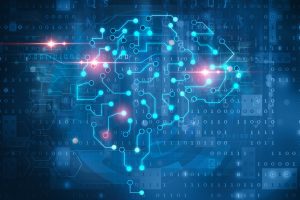U.S. energy forecasting agency projects that, despite gains in energy efficiency, global population growth and other drivers will cause energy consumption and greenhouse gas emissions to keep rising. Many experts are also forecasting that aging power grids and greater occurrences of extreme weather events will continue to put reliability at risk.
But the future is not all doom and gloom. Many organizations are now exploring and enacting plans to improve grid resilience, including decentralizing energy generation with microgrids, using smart grid technologies, and incorporating more renewables. At the same time, emerging and converging technologies are giving facility teams the tools they need to take more control of the reliability, efficiency, and safety of their power supply.
Power distribution systems have become smarter, giving buildings and manufacturing facilities a holistic approach to optimizing onsite energy production and consumption, responding to risks faster, meeting sustainability goals, complying with regulations, and keeping people and property safe from cyber attacks. So, how do they help you do this? With new levels of embedded intelligence, connectivity, and analytics.
Smart power starts with smart devices
The ‘Industrial Internet of Things (IIoT)’ is gradually permeating every aspect of our lives, including the power infrastructure of our buildings. Smart energy and power quality meters, protection relays, and circuit breakers are helping facility and services teams to see deep within the electrical system. You can now pinpoint more sources of wasted energy and money, while being alerted to more types of risks before they can cause downtime or damage. Device networks are also designed to adapt as your needs grow.
Connecting to every opportunity
For fast decisions and fast response, it’s critical to get the data you need when you need it. Within the power infrastructure, IoT-enabled devices offer many networking options, including wireless, Ethernet, and embedded web servers. This connectivity helps you supervise and optimize all of your important energy assets.
Aggregating data to cloud-based apps gives operations teams the access they need to make smarter decisions about energy use, while maintenance teams keep on top of equipment reliability and service needs using mobile-accessible logbooks.
To protect this new level of connectivity against cyberattacks, many manufacturers are now focusing on cybersecurity training, code best practices, and more extensive testing.
Making sense of everything
Rather than be overwhelmed by the ‘big data’ created by all these connected devices, the newest analytic apps convert data into actionable insights, tailoring for each team. Dashboards and reports help you compare performance, set baselines, track progress of initiatives, validate savings, and calculate your carbon footprint.
These new tools allow you optimize energy use without compromising reliability. Predict energy needs and simplify participation in demand response while optimizing the use of onsite renewable. Improve uptime while reducing maintenance costs using strategies like predictive maintenance. And use the cloud as a conduit to expert managed services.
#SchneiderElectric #LifeIsOn #PowerDistribution


Conversation
Indeed very informative post. Keep up the good work! The near future of IT lies in the new generation technologies, especially in IoT.